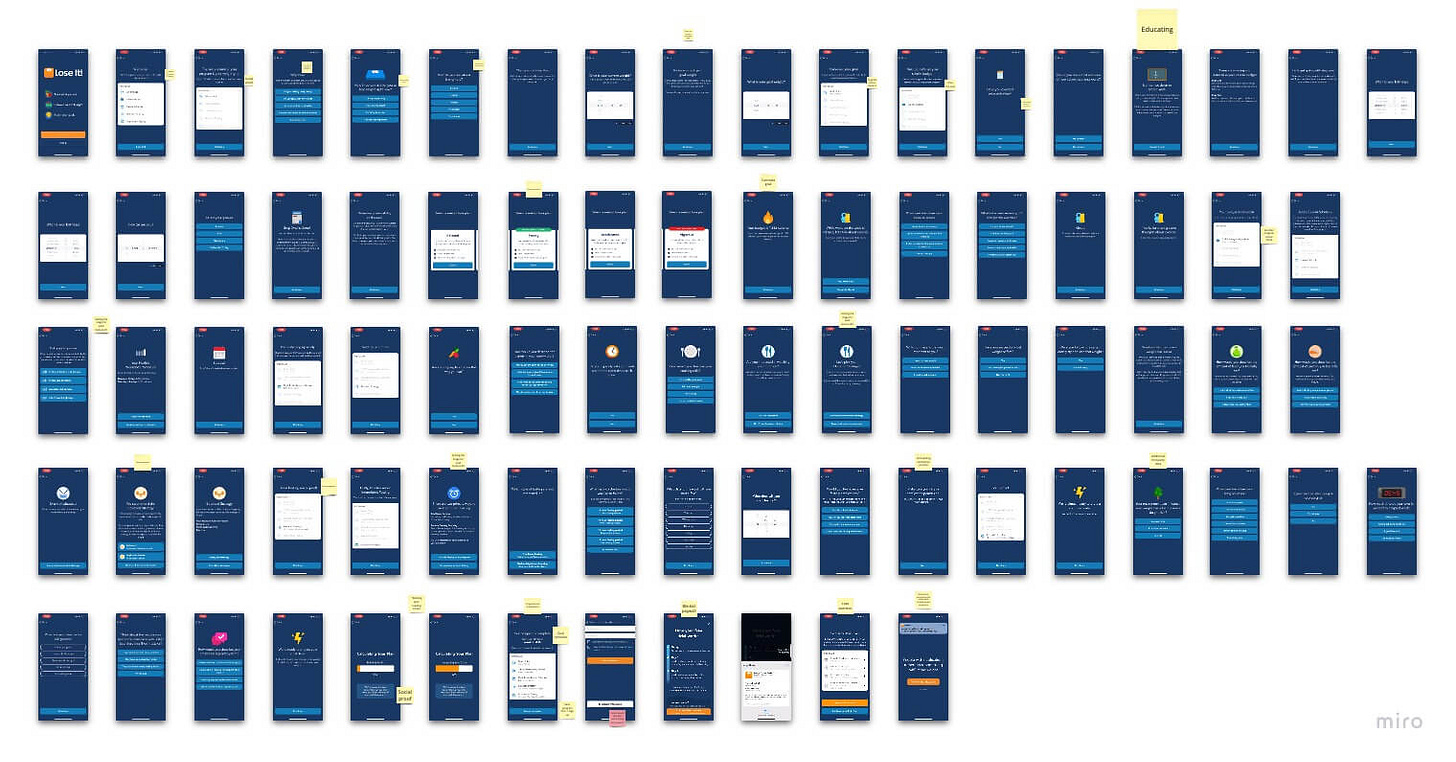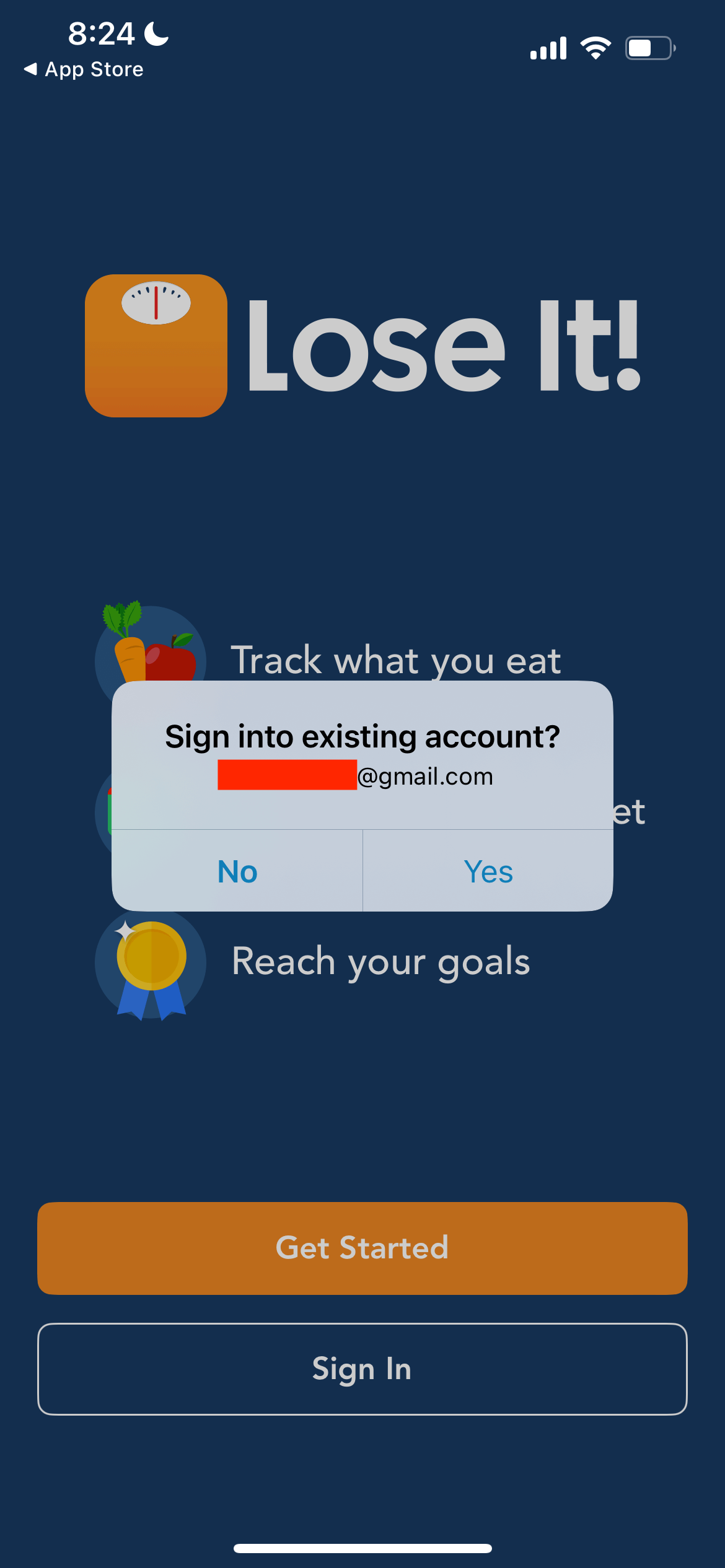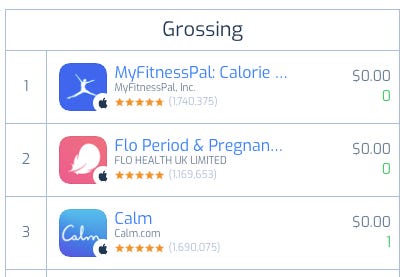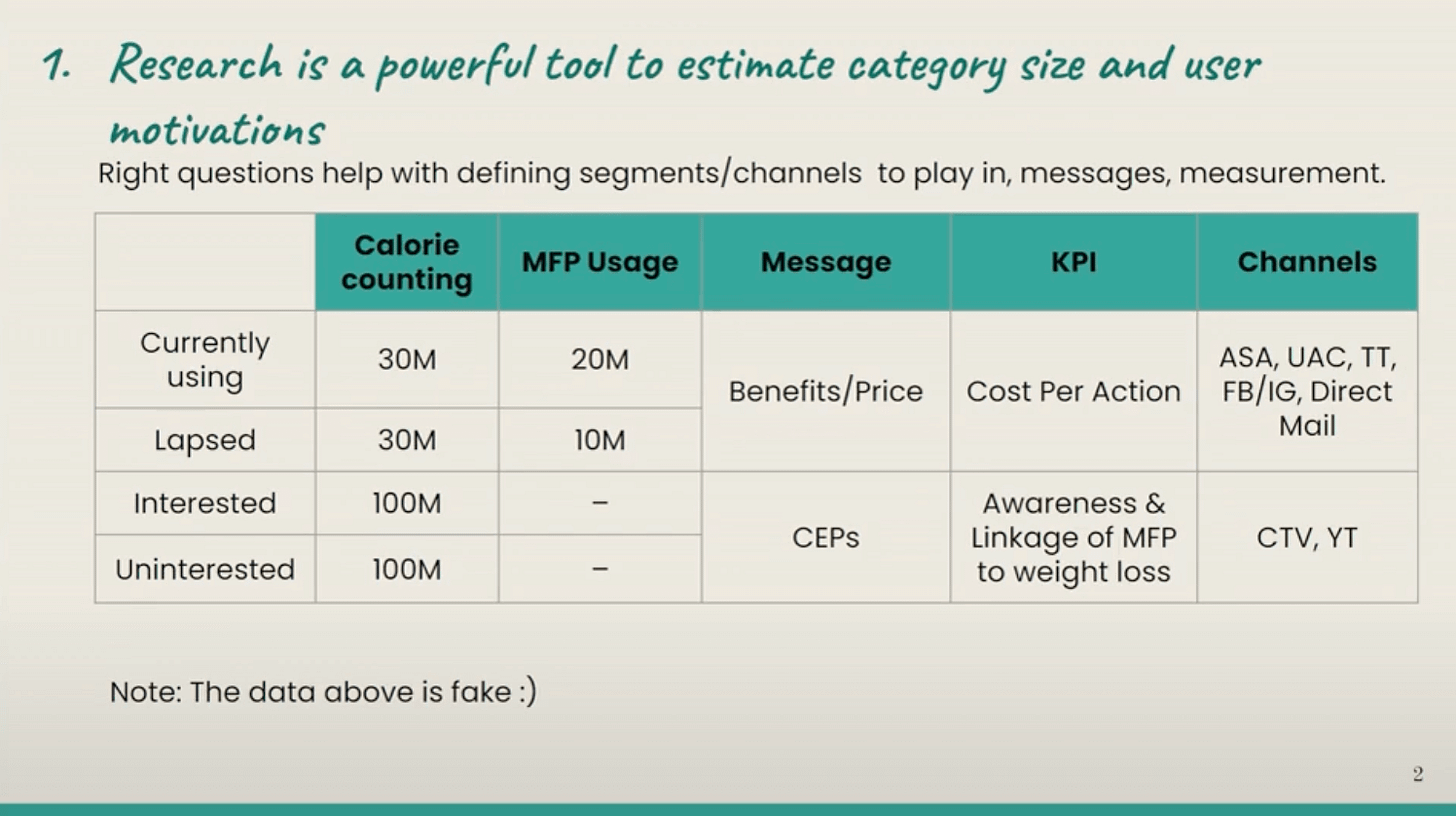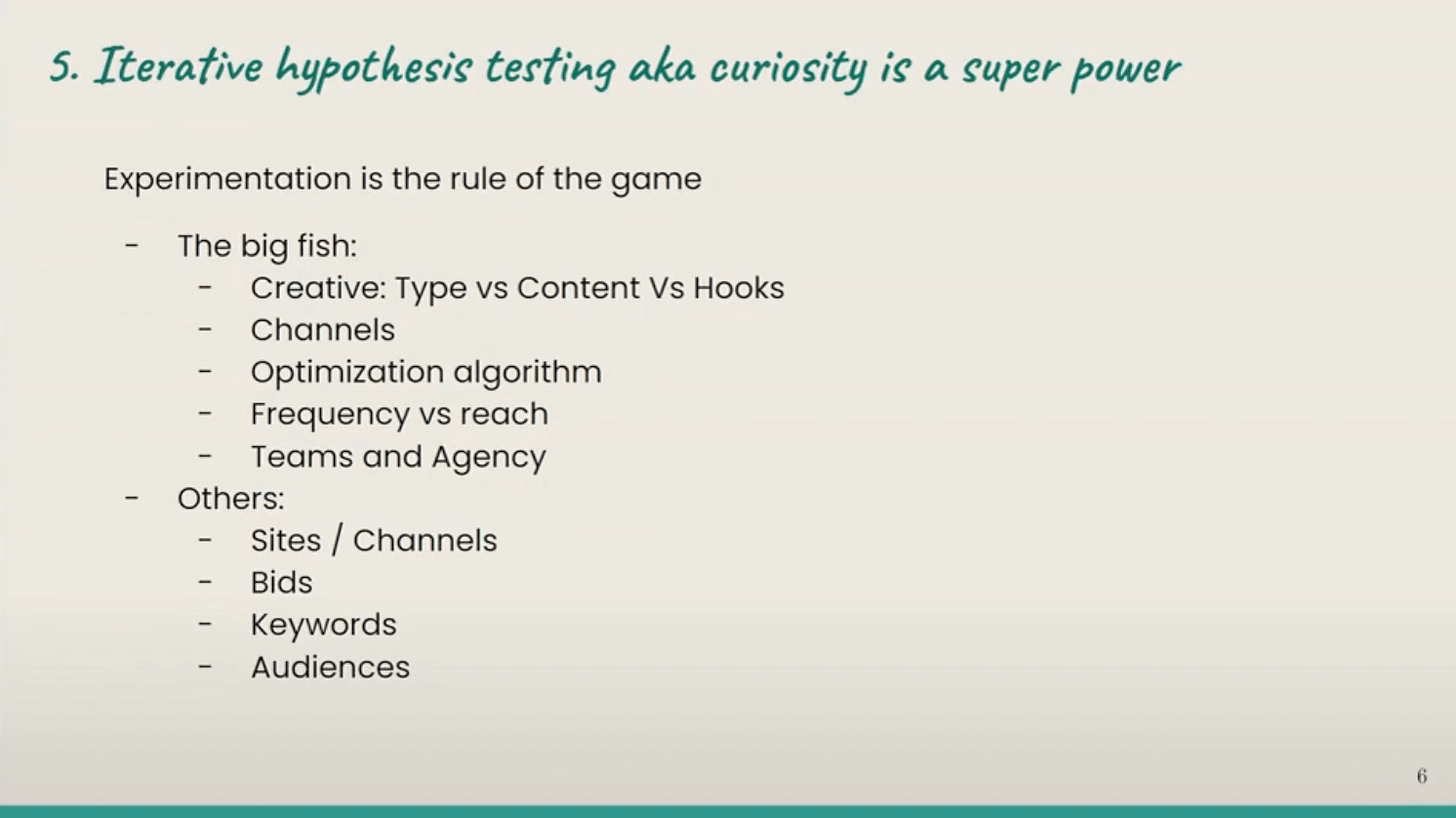💎 Growth Gems #102 - Onboarding, Lifecycle Marketing, and Paid Acquisition
Hey,
This week, I’m sharing gems on:
These insights come from Erin Webster-Shaller, Paul Apollo, and Mansi Sharma.
Enjoy!
Like this edition? Let me know!
🥇 TOP GEM OF THE WEEK
1. Product, Onboarding, and Lifecycle Marketing for a freemium app
Gems from Erin Webster-Shaller (VP of Marketing at Lose It!) and Paul Apollo (SVP Operations Lose It!) in Achieving Mission & Profit with Freemium (Sub Club podcast)
I was very interested in hearing the growth perspective of a freemium product.
On my first listen, what stood out the most was their pretty epic “longboarding” approach, but I either missed some of the other insights, or they seemed hard to convey.
Fortunately, Jeff Wang (VP of Growth at Hiatus) put it on my radar again, and I gave it a more attentive ear. Together with the examples from the app, I hope you’ll find these gems valuable!
Free vs. paid decisions
💎 Free users are valuable to LoseIt! because they still create great business value by contributing to a large user base and generating organic word of mouth.
(03:42) by Erin
This is one of the insights that stood out to Jeff, so I’ll share his comment below:
This stood out to me because there can be a lot of mutual value to free users that shouldn’t be underestimated.
Being primarily a content-based, paid user acquisition VP of Marketing myself, it was fascinating talking to Erin in the past about our very different approaches to growing our brands. She taught me the value of organic acquisition and product-led growth.
I think word of mouth is underrated in data-driven orgs like ours, where we try to attribute all users to our main breadwinners of paid media. However, that causes inefficiencies in our LTV models when organic elements like word of mouth can be a sizable contributing factor.
💎 Product decisions revolve around both free and paid users. Free users get basic but very useful features (e.g., mostly calorie counting). Premium users get more advanced features for those willing to dive deeper into the app (e.g., carb intake, more advanced diets, calorie cycling, etc.).
(09:51) by Paul
Longboarding
💎 Introduce loss aversion as part of the onboarding. Have onboarding questions, then a generic paywall, then more questions related to specific premium features. You can even have users set up those premium features. Then, have a “feature paywall” and say, “These are part of the premium plan”.
(13:29) by Paul
Paul called what they’re doing “longboarding”.
It’s my first time hearing that term, but it definitely stuck!
He shared that their trial start rates went up double digits by asking more questions. They kept making their onboarding longer and longer until they saw diminishing returns. Eventually, they used the answers to customize the product to fulfill the promise…
Speed to value is not always achieved by “getting users using the product ASAP”: check out this insight from Ethan Carr in Growth Gems #69 and this one on the two types of onboarding by Darius Mora in Growth Gems #50.
But back to why the previous insight is “gem of the week”. I put together a carousel to walk you through how this works in practice for Lose It!
Word of mouth and referrals
💎 To increase word of mouth and gather more testimonials, target people who have seen success in your app. Make the request at key moments/milestones, as this will yield higher response rates. The act of responding might even help engagement with the brand.
(25:55) by Erin
For Lose It!, this key moment is the 5-pound-loss mark, and they show a survey with a few questions at that time. Then, they use the stories in their marketing. Here is an example of how they leverage user testimonials:
💎 It’s in your interest to get users’ friends to also sign up. However, the incrementality of a referral program can be hard to prove, and referred users might have a lower LTV.
(29:15) by Paul
Lose It! Didn’t get a clear win from their referral program. They explain this by the fact that people who share the app might share anyway, even without a program. David also noted that referral programs are not a silver bullet and that it’s rare to see a double-digit impact.
Lifecycle marketing
💎 Lose It! focuses on the segments that bring in the most money: New (just signed up for the first time) and Reactivated (come back from a long absence). They try to convert them through sales via in-app messages, so they can get them while they’re in the app.
(31:50) by Paul
💎 Discount messaging resonates heavily with the price-sensitive audience of Lose It! so they emphasize how much users are saving and how much value they get for a low premium price.
(17:05) by Erin
The price sensitivity of an audience is a spectrum, but it does make sense that a product with a solid free offering and features would attract an even more price-sensitive audience. Erin and Paul often mentioned this strong “free base” as both a good and a challenging thing.
I see a low-hanging fruit for them right there. Can you guess what it is? It was one of the gems in the 100 Bonus Gems 🎁 PDF.
💎 If you have data indicating that users of your free version who did not convert after 30 days will not convert at all, start offering steeper and steeper discounts. It at least helps you monetize a part of this cohort and rewards those users with an exclusive discount.
(32:30) by Paul
Paul even mentioned going from $40 to $5. There is, for example, a discount for users on a 30-day streak.
He also shared that pretty much the only way they could convert these users otherwise is if they leave and come back (in which case they’re part of the Reactivated segment).
Paul said that in the weight loss space, the attrition curve is brutal. People either don’t stick around or the product is working for them (e.g., they’ve achieved their goal or are satisfied with the free version).
💎 For users that opt into notifications, test in-app messages vs. emails for your offers and sales. In-app messages unlock the ability to quickly iterate and inject sales as part of the offer (faster than contextual promos requiring engineering work) and to prompt (more qualified) users while they’re in the product.
Note: for Lose It!, A/B testing emails vs. in-app messages (for users that could receive them) showed that in-app messages bring much more revenue.
(38:40) by Paul
💎 When you deliver the in-app message matters a lot: you don’t want to interrupt an important user flow (e.g., logging in calories); you want to prompt users after a critical milestone (e.g., after logging in).
(41:00) by Paul
Paul mentioned that a persistent countdown timer at the top of the calorie logger has helped increase conversions because users are reminded of the sale and have an easy way to get it.
💎 Having a “notification center” gives users a place in the app where they know to go to get messages from the developer.
(42:50) by Paul
2. Paid acquisition: research, measurement, and curiosity
Gems from Mansi Sharma (VP of Growth Marketing at MyFitnessPal) in Lessons Learnt while Driving Growth Marketing at MyFitnessPal and Rakuten Viki (App Promotion Summit)
We’re staying in health and fitness! These insights are still very much applicable to other verticals, though.
I couldn’t make it to APS San Francisco, so I missed out on meeting up with some of you and on the happy hour (I’m guessing there was one)…But at least I got a chance to go through the videos!
While I don’t use the MyFitnessPal app myself, I tried it and have seen a lot of interesting things. They are also at the top of the gross rankings for their category for a reason…So, I was excited to see Mansi on the agenda.
It’s a bit more high-level, but her talk was my favorite.
💎 Research is a powerful tool to estimate category size and user motivations. You can assess for which market segment:
There isn’t much potential for more acquisition. Example: you have 2/3rd of users currently using a Calorie Counter.
Lapsed and might require retargeting campaigns,
Product marketing and messaging can help you capture more users
Could be converted through brand campaigns
(0:57)
💎 Targeting isn’t nearly as important as a good creative. A good creative can talk to all four segments: uninterested, interested, lapsed, and currently using. Creatives that work the best are linked to a user's pain point and how the product solves them to achieve a goal.
(02:55)
💎 Scale pays better than niche. Find where customers spend the most time: games, broadcast, radio, etc. For each “channel” where they spend time, find the top sites. A few channels (in the broader sense of the term) usually do the job.
(03:40)
When I see people talk about finding customers where they spend the most time, they usually refer to finding the user acquisition channel: TikTok, Pinterest, etc.
Here, Mansi refers to the things people spend time doing.
💎 Triangulation is the key to measurement. Use in-platform data, media mix models, experiments & incrementality, and post-purchase surveys to understand if what you’re trying to achieve is working. The pros and Cons of each method are below.
(04:40)
Another method I see besides post-purchase surveys is having a How Did You Hear survey. As the other methods, results are to be taken with a grain of salt: I remember Thomas Petit mentioning that even with no TV spend, some users would pick TV.
💎 Take your curiosity beyond looking at the levers that help you grow: zoom out to look at the 360-degree view of your category:
Why does your product work (or not)
Who are the competitors, and how is their product better (or not)
How are you priced? What options do people compare you to?
Where do you and your competitors sell?
What is your marketing strategy and your competitors’?
(12:05)
Below is what Mansi highlighted in terms of experimentation:
💎 Once successful, the most important question is, “How can we repeat this success?” to make it scalable: from one company to another, from growth to CRM, etc.
(14:17)
Before I leave, here is a quote to expand on the curiosity aspect (I went to my favorite podcast outside of mobile growth):
“If you want to maximize outcomes and your impact on the world, you should turn yourself into the kind of person that does not need any entertainment to learn something” - Shreyas Doshi (PM Coach, ex-Stripe)
See you next time. Stay curious!
⛏️ Sylvain
🔗 Sources:





